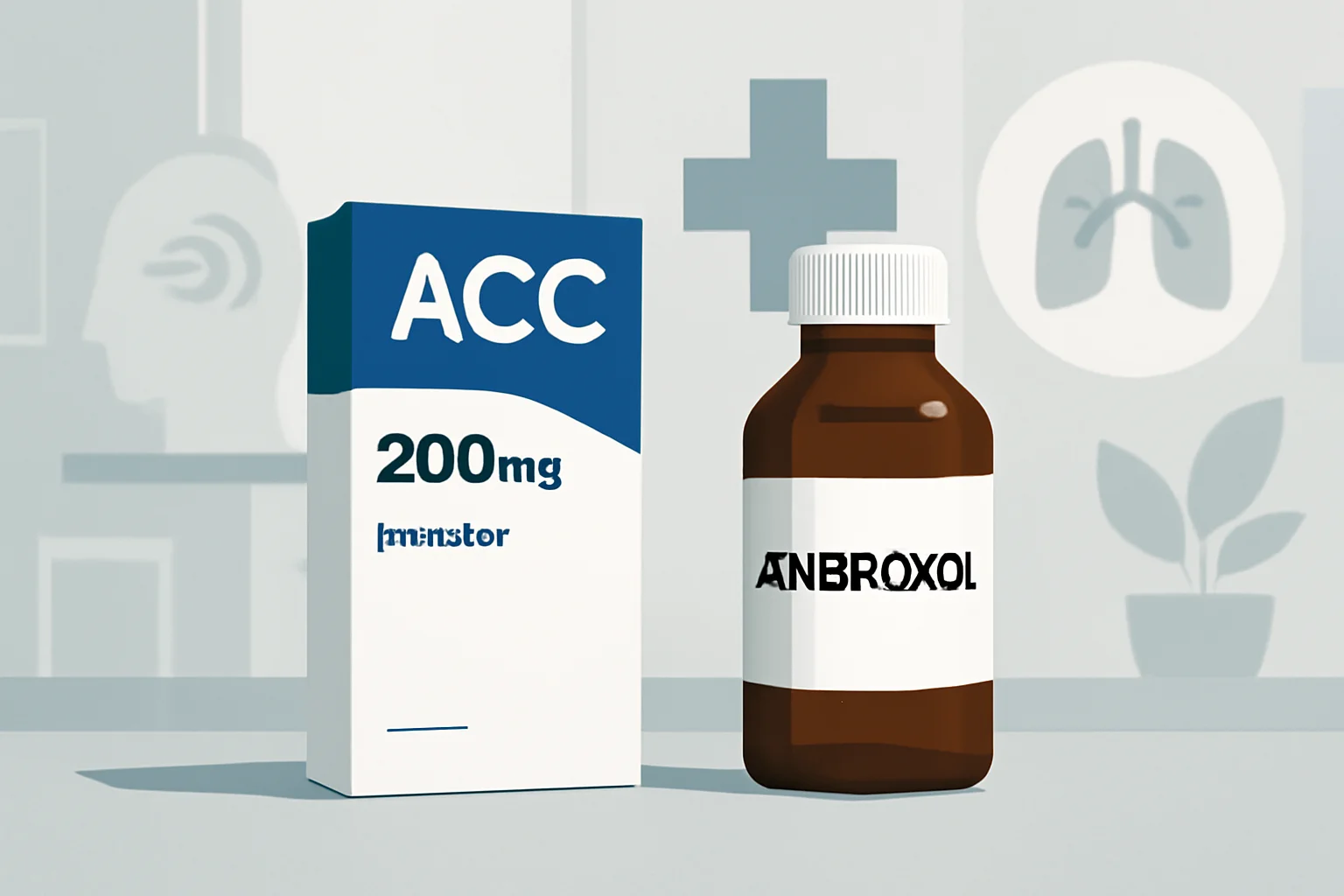
ACC and Ambroxol: What is the difference and when do we use them?
A respiratory system health is crucial in our daily lives. Respiratory illnesses, such as coughs, colds, or even pneumonia, often disrupt our daily routines and, in many cases, necessitate medication. To alleviate coughing and help with mucus clearance, various medications are available, among which ACC and Ambroxol are the most well-known.
These medications contain different active ingredients and affect our body in different ways. ACC, which contains the active ingredient acetylcysteine, is primarily used to protect mucous membranes and thin mucus. In contrast, Ambroxol is known for its cough-suppressing effect and also aids in mucus clearance. Since both medications support respiratory function in different ways, it is essential to understand when and in what situations to use them.
The aim of this article is to detail the differences and similarities between ACC and Ambroxol, as well as to help make informed decisions about choosing the appropriate medication. Having accurate information on treating respiratory illnesses can significantly enhance the healing process.
What is ACC and how does it work?
ACC, or acetylcysteine, is a medication mainly used for treating respiratory diseases. Its active ingredient, acetylcysteine, is a powerful mucolytic that helps dissolve thick, sticky secretions in the airways. This makes breathing easier and aids coughing to help the body expel accumulated mucus.
During its action, ACC can break down the bonds found in mucus, making it thinner. This can be particularly beneficial when a patient suffers from a respiratory infection, such as a cold or bronchitis. The use of ACC also helps reduce the cough reflex, as accumulated mucus irritates the airways.
ACC is typically available in tablet, powder, or solution form. The dosage and method of administration may vary based on the patient’s age, condition, and the severity of the illness. It is important to note that ACC is not only intended to suppress coughing but also to clear the airways, thus impacting the healing process.
In some cases, the use of ACC may be accompanied by other medications that complement the effectiveness of the treatment. Strict adherence to the treatment plan prescribed by a doctor is essential for achieving the desired results. When using ACC, potential side effects should also be considered, such as gastric irritation or allergic reactions.
Ambroxol: Mechanism of action and application
Ambroxol is another popular medication used for treating respiratory issues. Its active ingredient, ambroxol hydrochloride, also has mucolytic effects, but it also possesses anti-inflammatory and cough-suppressing properties. Ambroxol promotes the clearance of airways and improves mucus removal, thereby effectively aiding breathing.
One of the main advantages of using Ambroxol is that it not only thins mucus but also enhances the production of lung surfactant. Surfactant is a substance that helps prevent the collapse of lung alveoli, thus improving respiratory function. This can be particularly useful for patients suffering from more severe respiratory diseases.
Ambroxol is usually available in tablet, syrup, or solution form. The dosage and method of administration also depend on the patient’s condition and age. During the use of this medication, it is crucial to ensure adequate hydration, as fluids help in mucus removal from the airways.
Since Ambroxol also has cough-suppressing effects, it is often recommended for respiratory illnesses accompanied by coughing. However, attention should be paid to potential side effects, which may include gastrointestinal discomfort, skin rashes, or headaches.
ACC and Ambroxol: Which one to choose?
Choosing between ACC and Ambroxol is not always straightforward, as both medications can be effective in treating respiratory illnesses. Several factors need to be considered in making this choice, such as the patient’s condition, the severity of symptoms, and the doctor’s recommendations.
If the patient is experiencing severe coughing accompanied by mucus production, ACC may be the appropriate choice, as it effectively thins mucus and eases breathing. In contrast, if the cough is dry and the patient has inflammatory symptoms, Ambroxol may be the better solution, as it suppresses the cough reflex and has anti-inflammatory effects.
Doctors often recommend the combined use of both medications, as this can enhance treatment effectiveness. However, it is essential that combination therapy is conducted under medical supervision, as the medications may interact with each other and cause side effects.
The best solution is always for patients to consult their doctor about the appropriate medication choice. The doctor will consider the patient’s individual condition and recommend the most suitable treatment method.
Warning: This article does not constitute medical advice, and always consult a doctor for health issues.

